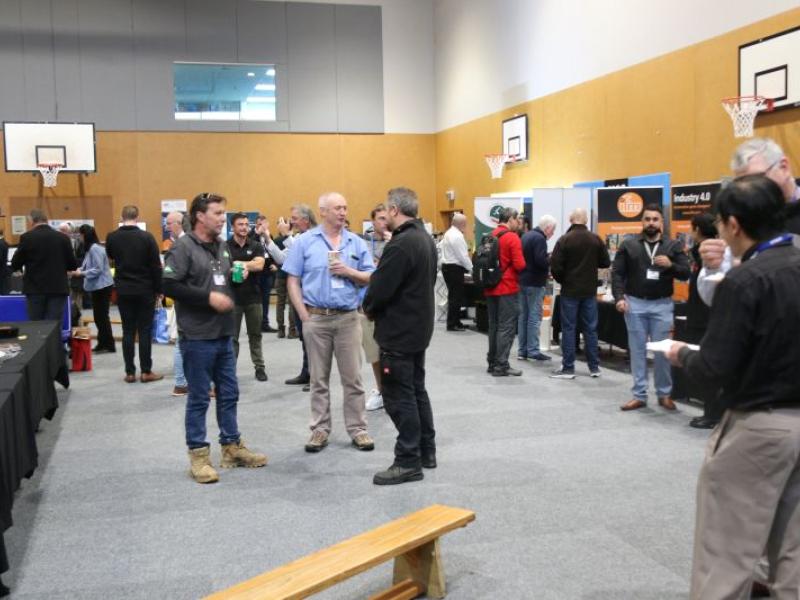Just as humans can be worn down by constant stress, so also can shock, vibration, and constantly changing loads accelerate wear in machinery and infrastructure, consume excess energy, and ultimately cause equipment to be taken out of service prematurely.
This cycle of fatigue, particularly of metals, can not only result in unplanned downtime, but also intrusive shuddering and noise caused by machinery, plant, and infrastructure not engineered to ensure optimum performance from the start of its role – and extending the same performance past mid-life and maturity.
The increased shock, impact and noise pollution may, in many instances, contribute to OH&S issues and diminished working conditions, particularly affecting the recently growing proportion of older workers whose skills industry can ill-afford to lose.
“Competitive, future-focussed employers can no longer afford unexpected downtime, because global markets are highly sensitive to prices, delay, and security of supply chains post-Covid. Industries such as resources, energy, and manufacturing have to be both price sensitive and secure suppliers. Not only that, but suppliers are very sensitive to performing to top standards of accident and injury prevention, including issues that can build up longer term, such as deafness and nervous system disruption,” says engineering plastics authority Laurie Green, who has decades of experience as a leader in his industry with clean, quiet and tough engineering plastics.
A straightforward rugged application of Wearply from Cut To Size Plastics, involving infrastructure reticulation system protection with a combination of coil springs and Wearply leaf springs, selected and adjusted based on the load limits, vibration frequency and unique operational factors involved in each application
Laurie Green is Managing Director of Cut To Size Plastics, an international provider of engineered plastics solutions for industries such as construction, electrical, infrastructure (including road and rail), mining and energy, manufacturing, oil and gas, marine, and land installations. Cut To Size’s subsidiary, Hercules Engineering, is also a leading supplier of structural bearings and slip joints for parallel markets.
An example of its extensive inventory of noise and vibration-quelling long-life technology is Wearply reinforced plastic composites that weigh less than aluminium but have up to 10 times the specific strength of 1020 steel.
This material – which can withstand millions of stress cycles at 1400 bar (20,000 psi) without fatigue failure – is used to optimise design and performance of machinery and plant components and leaf spring assemblies in which performance and reliability is vital, ensuring optimum performance from the start of their role and extending the same performance past mid-life and maturity.
Applications include vibratory conveyor, feeder, screening, materials handling technology, insulated rail jointing, food and primary product processing, automotive and vehicle suspension components, flexible couplings that can transmit torque even when shafts are misaligned, and electrical motor, generating and transformer products
Wearply derives its enormous strength, performance and durability from epoxy resins reinforced with continuously aligned, non-woven filaments. This allows plies to be laid so reinforcement is oriented to give greater strength and stiffness in the direction, or directions, in which it is most needed. Parallel filaments resist the stress abrasion that can shorten the fatigue life in conventional reinforced plastics, says Mr Green.
Wearply from Cut To Size Plastics is used for applications ranging from vibratory conveyor leaf springs (above) through to insulated rail joints, and electrical motor, generator and transformer components.
“This advanced engineering material is attracting the attention of machinery designers globally for its outstanding performance in a huge range of applications, from vibratory machinery in minerals and primary production processing to its hygienic, highly resilient high insulation properties in food and beverage plant and electrical applications. The same qualities that make it suitable for advanced aerospace and medical applications – such as helicopter blades and MRI equipment – mean it can be employed with confidence in automotive, rail, marine and high-precision tasks where reliability is vital.”
Wearply advantages include:
• High strength-to-weight performance, including 50 per cent greater compression strength than 1020 steel and a strength-to-weight ratio up to 75 x 106 mm. Aluminium is 45 per cent heavier
• High impact strength and low notch sensitivity
• High resistance to fatigue, which, combined with other properties such as high dynamic strength, makes the material very suitable for helper, guide and drive springs in swing and screen technology
• Longer service life, which, in the case of linear and circular conveyors with magnetic drive, provides longer service life that results in higher outputs for food production, for example
• High temperature stability – dry service temperature up to 177 C (350F)
• Chemical and corrosion resistance – demonstrated in a wide range of vibratory conveyors, feeders and screening equipment working in aggressive environments. Resistant to cleaning fluids and solvents
• Improved electrical resistance – for performance as an electrical insulator in areas such as rail jointing, where it is used in standard, heavy duty, and adhesive types, and as a structural high temperature composite in generators and transformers
• Damped vibration, noise, and shock qualities, which, combined with other material properties, contribute to automotive leaf springs that offer ride smoothness, handling performance, longer life (and freedom from rust).
• High elastic storing capacity combined with high mechanical strength, to provide higher resiliency as compared with normal steel leaf springs, higher internal damping, well balanced resilience behaviours and six-fold storage capacity as to elastic energy compared with steel springs. Also used in shock and strut structures.
Mr Green says engineering thermoplastics are often an untapped resource for machinery and infrastructure designers and operations staff.
“Some prefer to stick with the old way of doing things, and that is excellent where the solution involved is the result of long experience and examination of alternatives. But the science of materials is a rapidly advancing field, particularly advances in thermoplastics, where extended wear, low maintenance, reduced noise and OH&S considerations are important.”
For further information, please contact Cut To Size Plastics Pty Ltd by calling 1800 CUT2SIZE, or contacting our offices:






